On the Road is a weekday feature spotlighting reader photo submissions.
From the exotic to the familiar, whether you’re traveling or in your own backyard, we would love to see the world through your eyes.
Happy Monday!
After this week, we have only 10 more OTR posts in the queue. So if you’re thinking of putting something together, now would be a good time to get started!
Click on the image below for a bigger non-blurry image of the schedule for this week.
Albatrossity
In between Christmas and the deep freeze that we are currently experiencing, we headed to Carrboro NC for a few days of visiting with my brother, sister-in-law, and their kids. Since airports still seem to be COVID incubators, we drove there and back, spending some time in Asheville on the return trip as well. A good time was had by all, and we got back before the truly wretched weather hit here in Flyover Country (I’m told it is always lovely in NC).
This was not a trip to see birds, but I did bring the camera, and spent an hour or so on a clear bright day, photographing birds in their lovely front yard. As a photographer, I probably think about light more than most folks do, and found myself working hard to get decent pictures of birds in the low slant light of a January afternoon. Lots of the birds were skulkers as well, and that means that the shadows of twigs and branches figured more prominently in the images than I generally preferred. But sometimes they made for some interesting compositions, so I include some of those here. Hope you enjoy this brief look at the winter birds of the NC Piedmont.
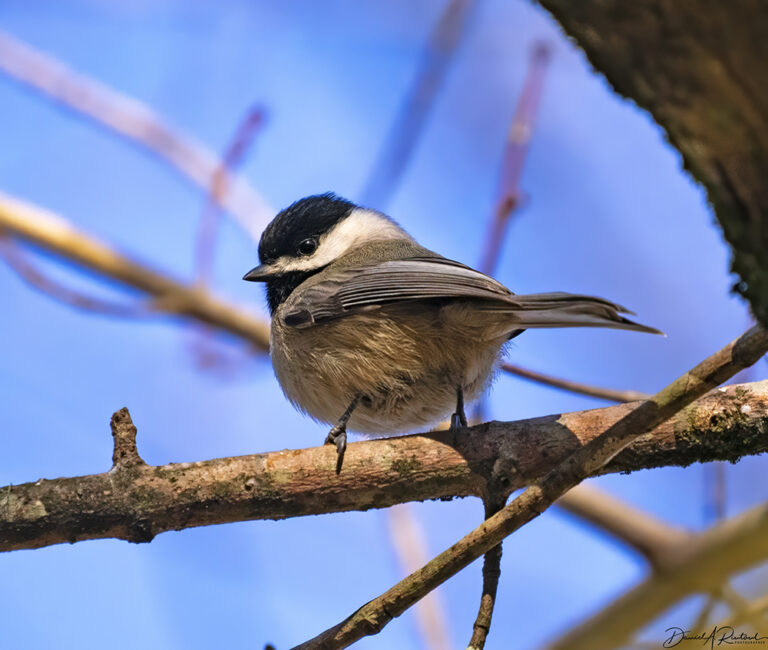
I had a picture of a Carolina Chickadee (Poecile carolinensis) in last week’s OTR, and some commenters said that they had no idea that there was more than one kind of chickadee. Indeed there are, and they include not only the familiar Black-capped Chickadee that frequents backyards across the country, but also other North American species like Chestnut-backed Chickadee, Mountain Chickadee, Mexican Chickadee, Boreal Chickadee, and lots of Old World versions that go by the name of Tit. Most of these are very hardy birds, to whom winter is just another season. Carolina Chickadees like this one were abundant visitors to their feeder, but do not show up in my patch of Flyover Country, so I was happy to see them again. Click here for larger image.
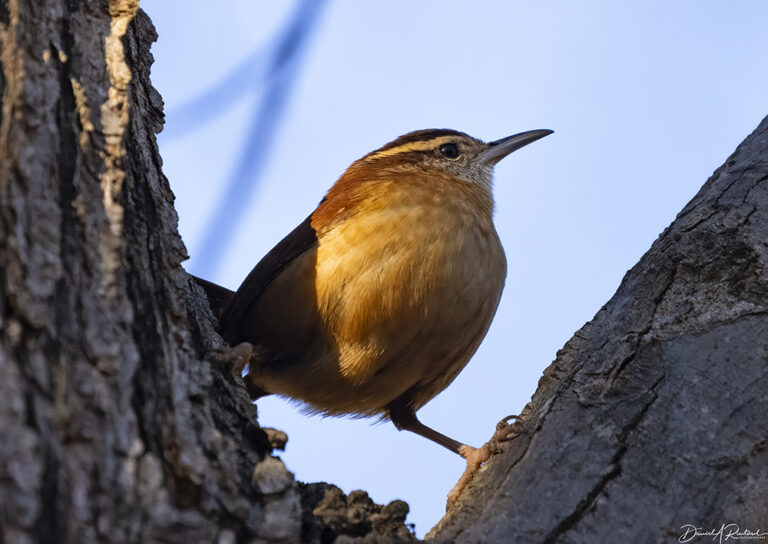
Carolina Wrens (Thryothorus ludovicianus) can be found in my yard in Kansas, but they are always fun to watch and listen to. This one was working out for the Olympic gymnastics trials, apparently. Click here for larger image.
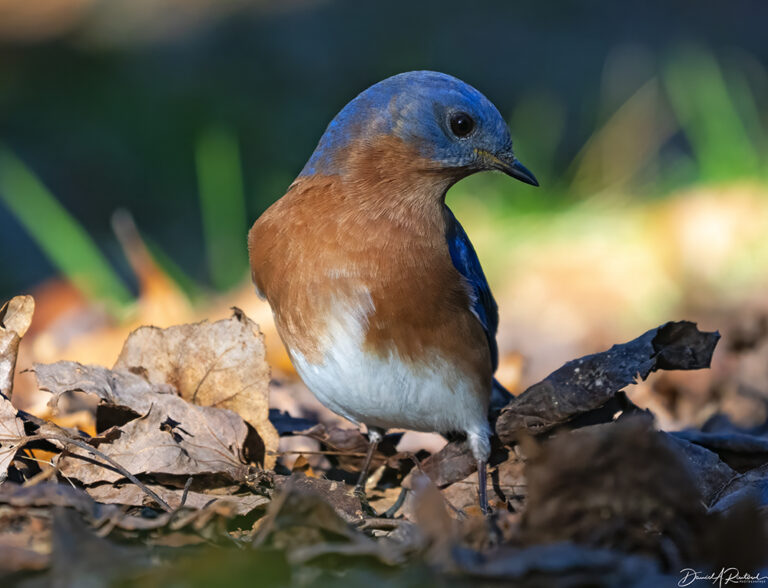
Eastern Bluebirds (Sialia sialis) are also familiar birds here in Flyover Country, and were quite abundant in North Carolina. As mentioned last week this was the first bird I saw or heard on New Year’s Day, and I hope it is a harbinger of a great year in 2024. Click here for larger image.
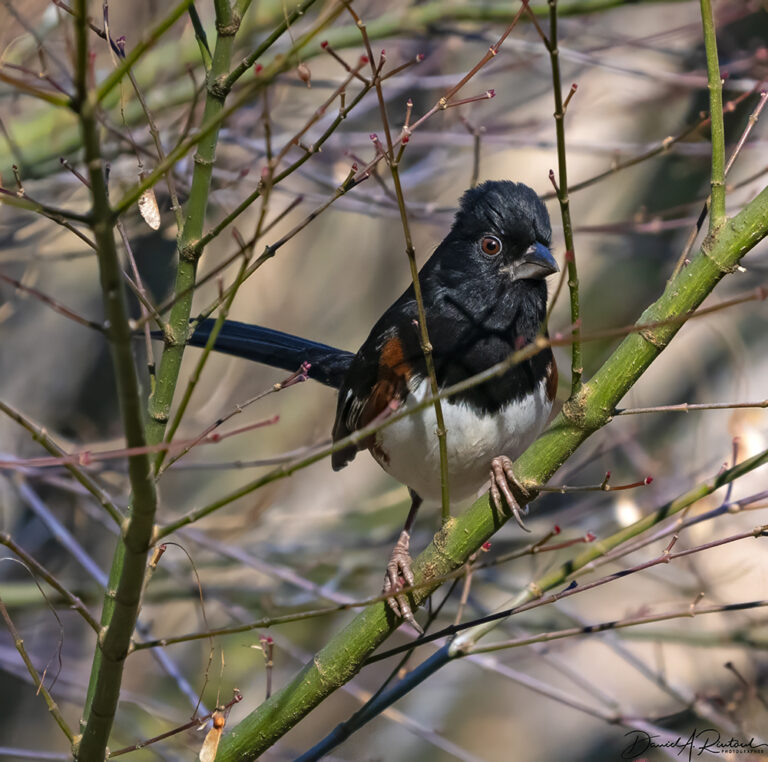
Eastern Towhees (Pipilo erythrophthalmus) are summer birds in Kansas, retreating southeast and replaced by their western congener Spotted Towhee) in the winter. They are very common in the part of NC where my brother and sister-in-law live, and their loud “chewink” calls are a familiar part of the soundscape in their yard. This is an adult male, with a dark red eye, a dark black hood and bright rusty flanks denoting that status. Click here for larger image.
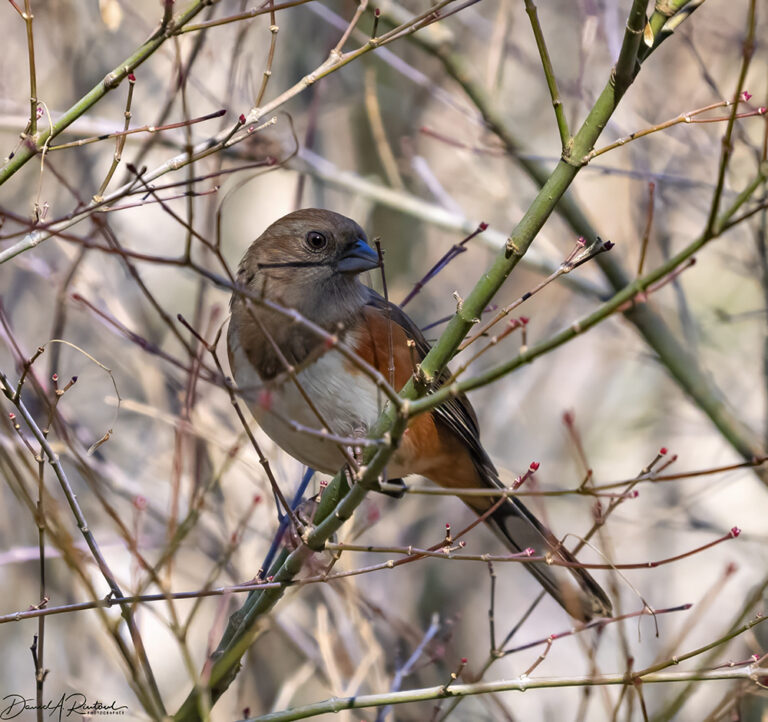
Adult female Eastern Towhees are basically a muted version of the adult male. Click here for larger image.
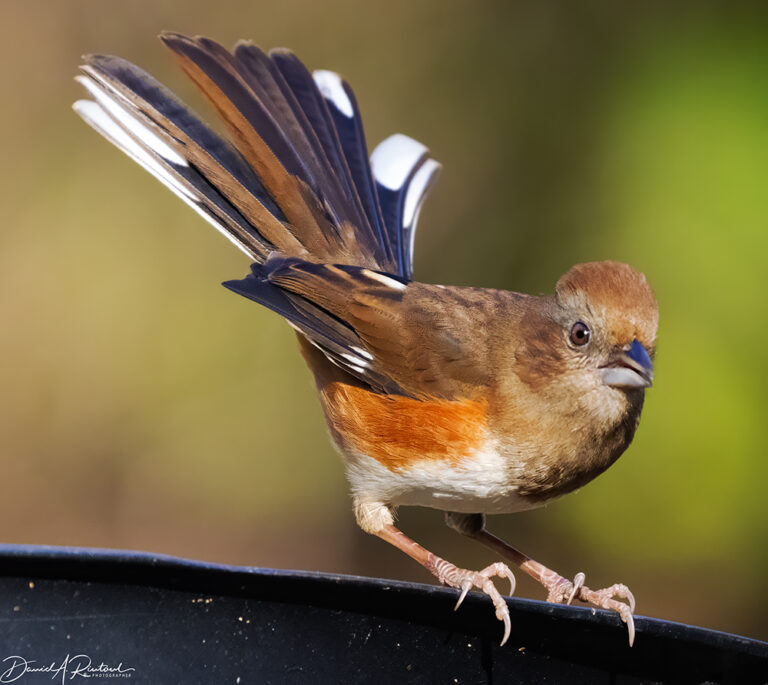
And this fancy-looking bird, showing off the white-cornered tail feathers, is another version of the Eastern Towhee. Note that it has a pale eye and a pale version of the dark hood of the adult birds. I think it is a female in its first winter, which is consistent with its relatively bold behavior of perching in the open. Click here for larger image.
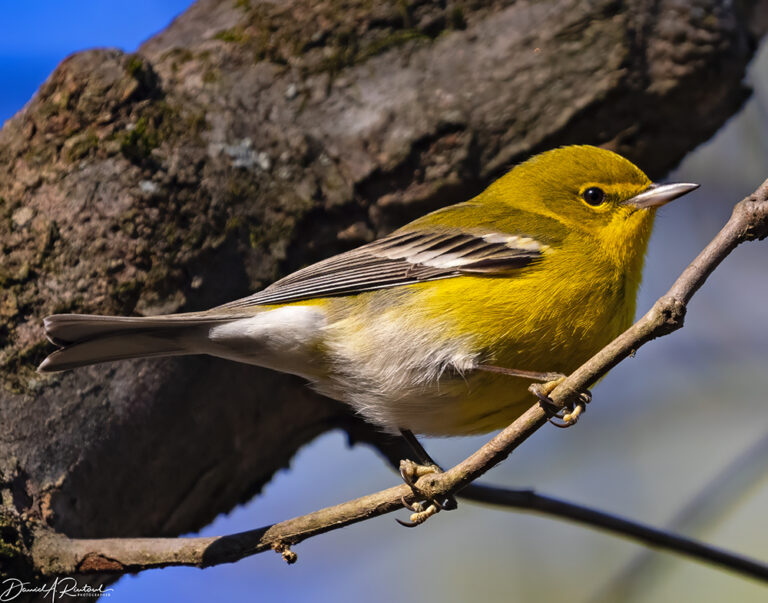
This bright yellow bird with white wing-bars is not a goldfinch, it is one of the few warblers that can be found in winter in North America. Pine Warblers (Setophaga pinus) winter in good numbers in NC, and even occasionally show up in winter here in Flyover Country. They are also one of a few warbler species who come to bird feeders, favoring a high-fat suet diet in the colder months. Click here for larger image.
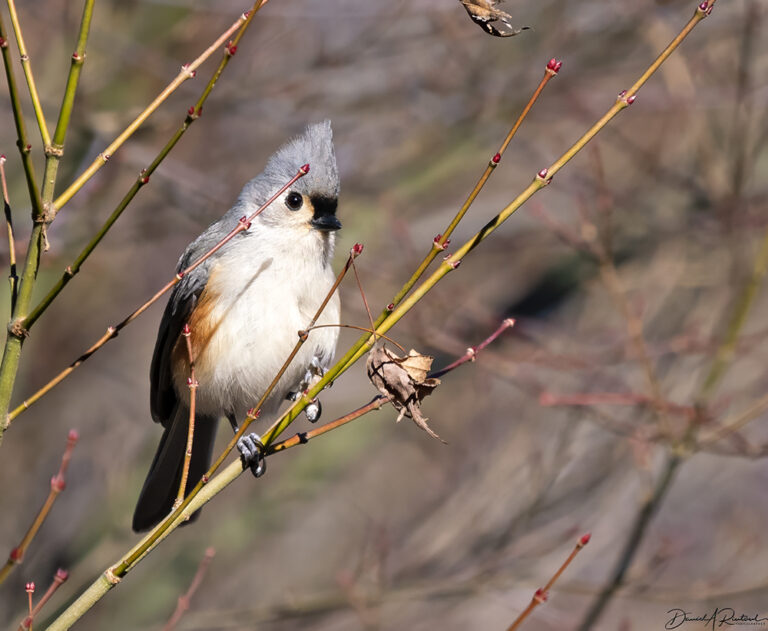
Another chickadee relative, the Tufted Titmouse (Baeolophus bicolor) is a favorite at birdfeeders both here and in the east. The perky crest only adds to their image as an animated and active feeder species. Click here for larger image.
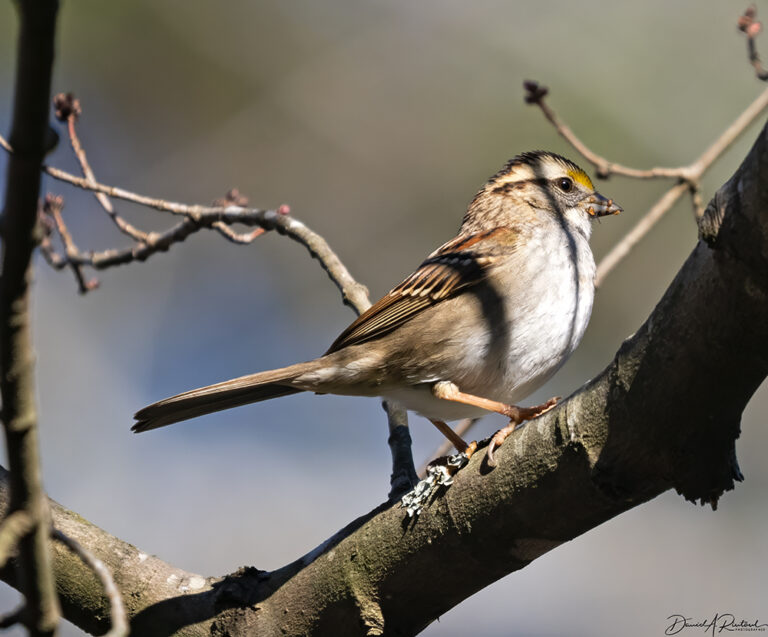
White-throated Sparrows (Zonotrichia albicollis) are quite common in winter in the east, and that includes eastern Kansas. But they start to peter out in my part of Flyover Country. They are uncommon birds at my feeder, but we did have one this week when the snow cover and cold winds forced some birds to seek food in backyards. They come in two versions, one where the head stripe is white (like this one), and another with a tan/brown head stripe. Both versions have that yellow patch in front of the eye. This one apparently was eschewing the seed feeder in favor of eating the buds from some of the trees; you can see the bud residue on its bill. Click here for larger image.
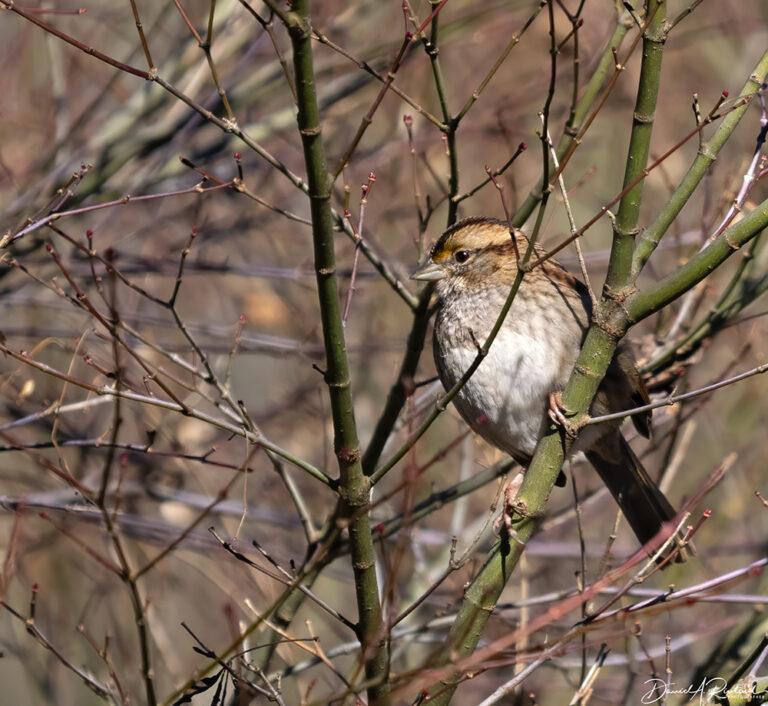
This is the tan-striped version of the White-throated Sparrow, and might be a young bird in its first winter, based on the overall dullness of the plumage and the residual streakiness of the upper chest. Click here for larger image.

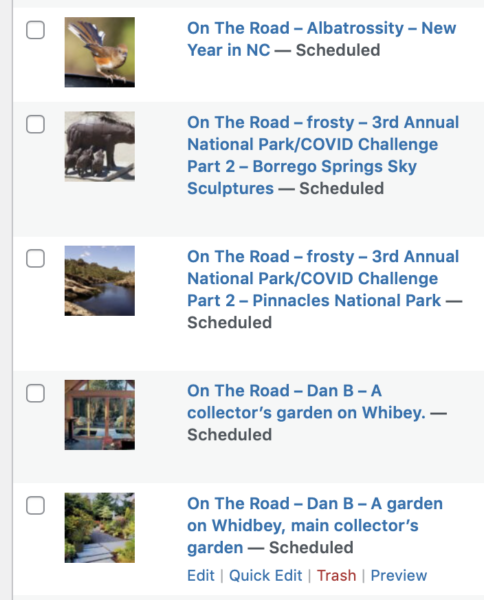
sab
At last you do the kind of birbs that feed at my birbfeeder.
The chickadee song thing was a shock to me. Those carolina chickadees don’t even sound like chickadees to me. Southern accent on steroids.
Also too. You say sparrows are easy to distinguish. Turns out my difficulty was we only have housesparrows. They look different because adult boys, adult girls, youngsters. All slightly different but all house sparrows and that’s what sparrows I have.
I want to someday see an actual bluebird.
sab
I usually hesitate on suet, because when it is ignored it tends to melt and fuck up the plants underneath.
This year has been so cold I did put in suet, and the birds have been crazy. Especially woodpeckers. All kinds.
Also too of course the squirrels. I happen to love tree rats.
SteveinPHX
Birds I remember from back East. Thanks for the treat!
eclare
Your brother must do an excellent job of keeping the feeders stocked with food. Those birds are well fed!
evodevo
@sab:
The Carolina chickadees we have around here do the squawky scolding chat thing (from which their name comes) when they are interacting with other birds or are unhappy about something. Their actual “song” is quite different – dwee-ter dwee-terrr (the end of the second phrase is at a lower pitch)
JPL
Although sparrows have overtaken the bird feeder, I have seen several different types of birds. The titmouse and carolina wren visit often as does a pine warbler.
A squirrel has visited but only once, so a this point I’m not concerned, but I read that you can add a small amount of cayenne pepper to the seed and that would deter it.
eclare
@JPL:
I got out and got pet food yesterday! The dog and cat had faces of relief “yay things are back to normal!” Still under a boil water advisory, but temps are good.
Geo Wilcox
When we first moved to our property in SE IN USA, there was nothing but old farm land. We had horses here for a while so that farm turned in to pasture. The horses got sold and we planted half the property in trees, over 10K of them in two years, and let the other half go fallow. We only mowed the Canada thistle to kill it. Eventually the pasture grew wild flowers, volunteer trees and tons of black raspberry thickets.
As for the wild life, I do bird counts with Project Feeder Watch (Cornell University). Before the pasture was rewilded I would get hundreds of birds at the feeders. Now I get considerably less since the wild food they should eat is plentiful. They only show up in large amounts when it is very cold or snowy. I had a LOT of birds this past few weeks of bitter cold and snow.
Oh and we had a bald eagle visit our pond a few days ago. We’d seen it several times perching in trees by the creek at the back of our property and I hope it sticks around. There are plenty of stocked ponds in my area and lots of squirrels )we had 9 at the feeder the other day).
StringOnAStick
Lovely, as usual. Thanks for including the ebird.org links, very helpful for assessing the range of each. I now know why it looks like we have two kinds of chickadees, because we are in the proper range for both!
I started feeding suet when I saw how cold it was going to get, and I made sure to have high fat seed for the ground feeders too. It was all very popular in the very cold mornings.
Gvg
I looked at the linked Cornell pictures and I still can’t see a difference from the Carolina and the Black capped. From the ranges, I have probably only seen Carolina’s and thought they were Black Capped.
mrmoshpotato
The man takes us for fools. 😁
Hope you had a good time with your (human) family.
Great pictures.
Spanky
@Gvg: The only way I can tell is by their calls. I grew up hearing Eastern Chickadees in Pittsburgh, so when I moved here to Maryland I wasn’t sure what was going on until I found out they’re a different species.
Albatrosity has shown most all the birds at my feeder, except the Redwinged Blackbirds, who don’t deserve to be shown since they’re basically a roving gang of wildings. Also, the hawks because, well, you know …
Mike E
It’s been robin-palooza here in Raleigh, the local crazed mockingbird (but I repeat myself) has been fending off starlings from the tree out front… the robins came and ate all the remaining sugarberries and taught my neighbor a lesson about parking underneath that tree. Nice snaps!
Albatrossity
@Gvg: It is indeed almost impossible to distinguish Carolina from Black-capped Chickadees from a photo. There are some subtle plumage differences (more white on the wing in Black-capped, tidier edge on the black bib for Carolina), but they are not 100% reliable. Song is reliable, but there are hybrids who have in-between songs, etc.
But having grown up with the Black-capped variety, when I saw my first Carolina Chickadee I noticed that it seemed smaller. And indeed the measurements given in the field guides bear that out; one lists Black-capped as averaging 5.25″ in length, and Carolinas are 4.75. The same field guide says that this “difference is not apparent in the wild”, But it was apparent to me, and I am still surprised by how dinky the Carolina Chickadees are whenever I seen one after a long period of only seeing the other species,
JPL
@eclare: Yay!!! The temperatures are going to start normalizing here this week. I hope your roads stay clear
Balconesfault
There will be some influences making serious jack this year trying to sell out their generation.
WaterGirl
So many chunky birds, I am in heaven!
Especially the first two!
Yutsano
It looks like we now know what happens to the bluebird when they go away in the famous song. They go to North Carolina! I also think that Carolina chickadee is flipping you some attitude there. “U wanna piece o’ me?”
Albatrossity
@Yutsano: Yeah, all chickadees have weapons-grade attitudes!
OzarkHillbilly
Starting my week on the right foot. Thanx A.
stinger
I love the twig-end shadow on the Tufted Titmouse. And I want to reach out and gently stroke the Carolina Chickadee and the Carolina Wren — must be the angle of the light that makes their feathers look like fur! Great photos all!
mvr
Thanks for these photos.
We (North of you in Lincoln) did see our first Carolina Wren on our feeders (or anywhere else nearby) in many months just a few days ago. The neighbors fixed the eves on their garage where some of them had been nesting and they didn’t come back to their usual haunts in the front year after that. But then a couple of days ago one was on our woodpecker feeder.
The sparrows and starlings have been brutal at our feeders this week, especially once things warmed into the positive numbers. I don’t mind the former so much, but the latter eat everything, chase all but the flickers, red bellied woodpeckers and jays away, and shit in the birdbath. So I’m not fond of them.